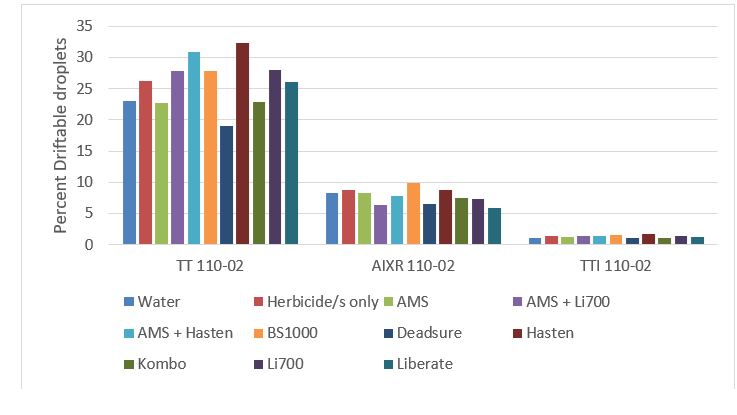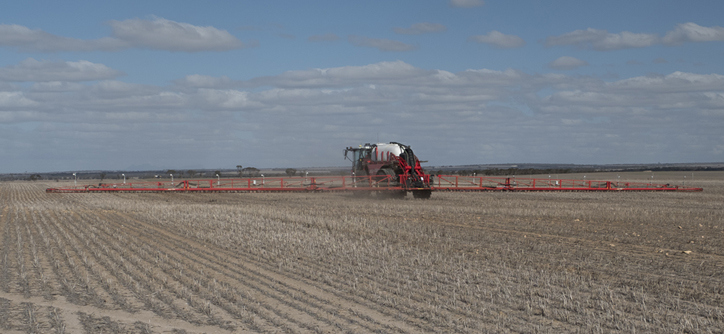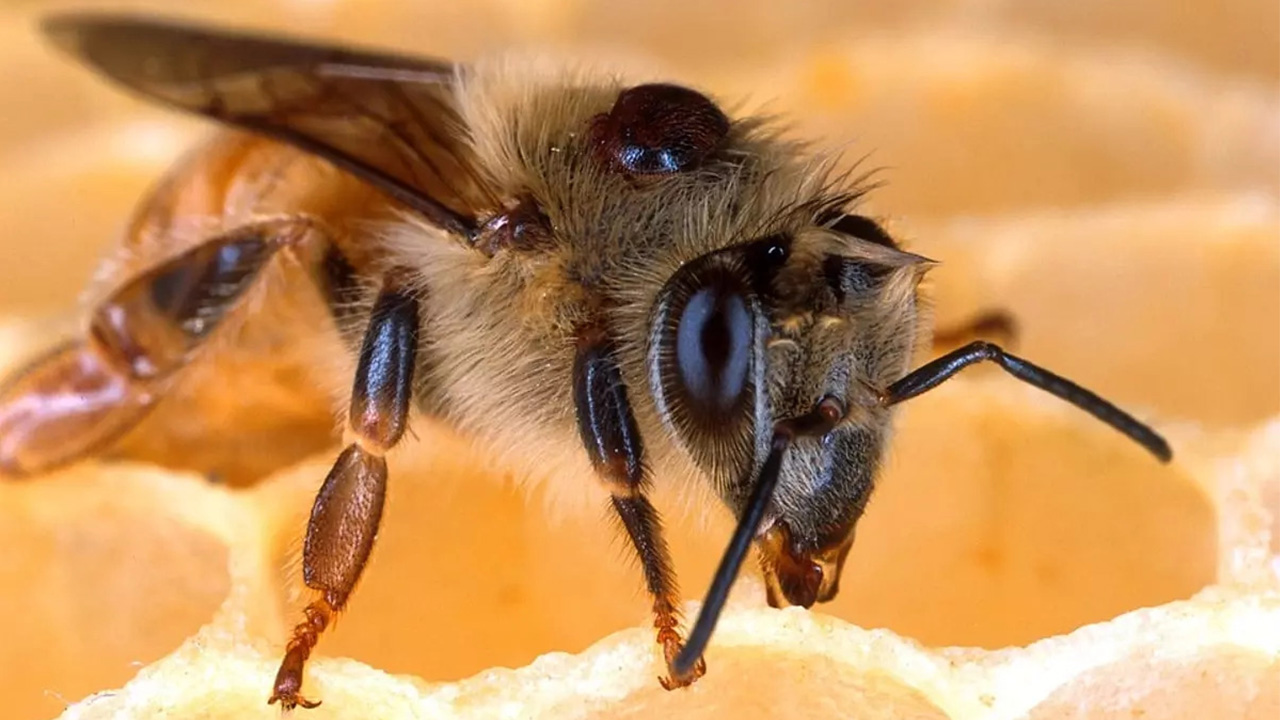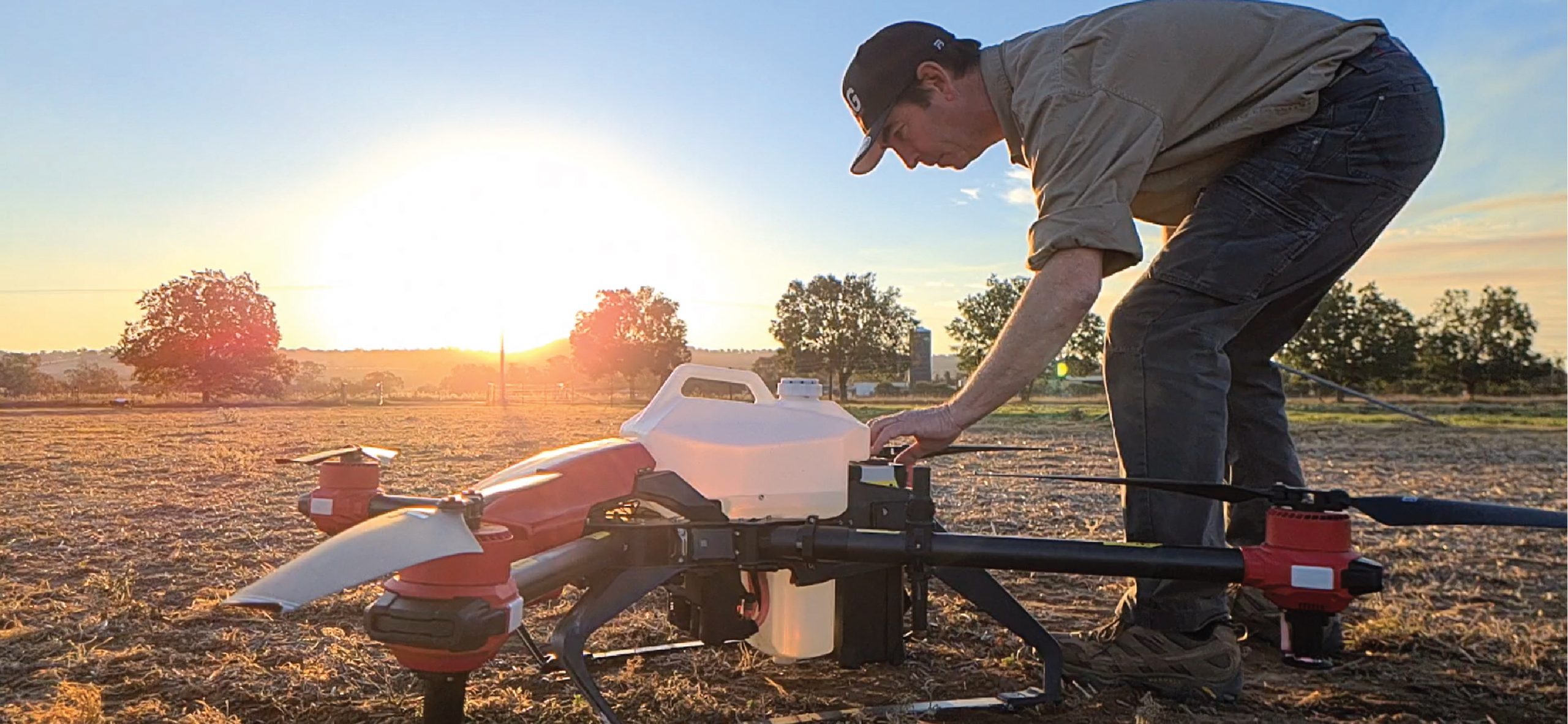Pick the nozzle for spraying quality and then the adjuvant for optimising control. The new regulations for using 2,4-D means that growers must use very coarse (VC) to ultra-coarse (UC) spray qualities for their fallow spraying depending on the conditions and sensitive areas in the vicinity.
Operators using conventional sprayers will need to consider high-pressure air induction nozzles, which have a minimum operating pressure of about 3 bar, and ideally should be run at 5 to 6 bar pressure.
The GRDC nozzle selection guides ( https://grdc.com.au/resources-and-publications/all-publications/publications/2019/grdc-nozzle-selection-guide ) were updated in January 2019 to include a more extensive selection of nozzles that can produce very coarse (VC), extremely coarse (XC) and ultra-coarse (UC) spray qualities.
For growers operating pulse width modulation (PWM) systems, there has also been a new GRDC nozzle selection guide for PWM, produced to help owners of this technology with nozzle selection to meet new label requirements. There are several nozzle choices for PWM systems to achieve a VC spray quality or larger.
Application volumes for summer fallow spraying
The move to larger droplets means that application volumes must be increased to maintain spray coverage.
When using a VC spray quality, or larger, the starting application volume for fully translocated products such as 2,4-D should be not less than 70 litres per hectare in low stubble environments (less than 2.5 to 3.0 tonnes/ha) and at least 80L/ha in the heavier stubble and/or higher weed densities.
Trial work by the Northern Grower Alliance in northern NSW-southern Queensland has shown that control can be maintained on hard-to-wet weeds such as flaxleaf fleabane, even when using UC spray quality.
Regardless of the spray system used, spray coverage should be assessed using water-sensitive paper (WSP) to determine whether the application volume is appropriate for the stubble load present.
Useful instructions for using WSP can be found in the GRDC GrowNote on Spray Application for Grain Growers (https:// grdc.com.au/resources-and-publications/grownotes/technical-manuals/spray-application-manual ).
Growers and spray contractors must understand that measuring spray coverage will only tell you if the droplets are hitting the target – not whether the droplets stick to the target. Ultimately the best measure of spray coverage is the control achieved. If the results of a spray job are less than expected, check the sprayer set-up, tank mix and coverage before blaming a coarser spray quality.
Tank mix and adjuvant effects on drift
The nozzle type selected has the most significant impact on droplet size and drift potential, while tank mix and adjuvant have smaller effects.
Recent research by the Centre for Pesticide Application and Safety (CPAS) investigated the impact of nozzle type and tank mix on spray quality. Droplet size analysis to determine spray quality and the driftable fraction was conducted at the University of Queensland’s wind tunnel facility at Gatton. The driftable fraction is defined as “the per cent of the total spray volume with droplets less than 150 microns in diameter” .
The tests used nine typical summer fallow herbicides, either alone or in tank mixes, with and without the addition of common adjuvants (totalling 19 herbicide tank mixes). The mixtures were sprayed through three different 110-02 (yellow) nozzles operated at 4 bar (400 kPa) pressure. The nozzles were:
- Turbo TeeJet ® (TT) – medium spray quality
- Air Induction Extended Range TeeJet ® (AIXR) – the coarse end of medium spray quality
- Turbo TeeJet ® Induction (TTI) – XC end of ultra-coarse spray quality
Graph 1: Effect of nozzle type on per cent volume less than 150 microns for the average of each herbicide + adjuvant mix.

NOTE: All treatments are the average of all herbicide mixtures + adjuvant except ‘Herbicides Only’ and ‘Water’.
The most effective way to minimise the risk of drift is by selecting the correct nozzle. The data shows that across the range of tank mixes, there is a 19-fold decrease in the percentage of driftable droplets (1.4 per cent compared to 27 per cent) by selecting a TTI nozzle over a TT.
Adding herbicides to the spray tank ‘fines up’ the spray quality for every nozzle tested, resulting in a more significant percentage of driftable fines compared to spraying water alone. However, when an adjuvant is then added to this chemical mix, the impact can be quite varied and is not necessarily consistent between nozzles.
For all nozzles, there is over a two-fold difference in the volume of driftable fines between the worst and best tank mix.
This study shows that for some common summer fallow tank mixes, more than one-third of the spray volume in the tank is at risk of not hitting the target if the wrong nozzle is selected. This can have significant impacts on the level of control of the spray job, and the potential drift risk to off-site targets.
The TTI nozzle produced an UC spray quality irrespective of the adjuvant added and had less than half the driftable fines of an AIXR with the best-performing drift reduction adjuvant added.
Given that nozzle choice has a far greater influence on the percentage of driftable fines than the adjuvant, it is important to choose nozzle first and then an adjuvant based on its role in improving weed control, either for modifying unsuitable water or improving retention and uptake. Further information regarding adjuvants can be found in the GRDC publication Adjuvants . https://grdc.com.au/resources-and-publications/all-publications/publications/2018/adjuvants-booklet
NOTE
It is the grower and the applicator’s responsibility to stay informed about their legal requirements and to seek out information and equipment that will help maintain efficacy while working within the legal framework.
Where product labels or APVMA approved permits for products require the use of a VC spray quality or larger, operators should consider the nozzle first and then choose an adjuvant that enhances weed control.
Resources
Maintaining efficacy with larger droplets – New 2,4-D application requirements
GRDC Spray Application Manual Module 21: Assessing spray deposits https://grdc.com.au/resources-and-publications/grownotes/technical-manuals/spray-application-manual
Pulse width modulation sprayers (correct operation)
The droplet size research undertaken by the Centre for Pesticide Application and Safety at the University of Queensland was a GRDC investment.
Story courtesy of Andrew Storrie – AGRONOMO




